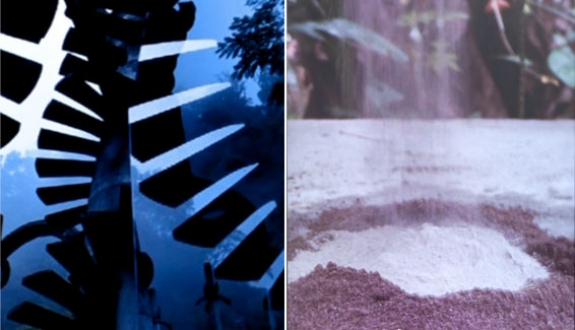“Can you paint a picture of the next five minutes of this, does it just go on and on?” asks Frances Morris, Tate curator, watching a film – a potential Tate purchase – at Frieze Art Fair. “Does the projector come with it? No? Oh that doubles the price.” Other comments flood in, then the wave of smart jackets, clicking heels, confiding voices, sweeps on to the next hopeful booth. “I find it really amusing, it makes me smile” (Candida Gertler, director, Outset Contemporary Art Fund). “We could show this in so many different contexts” (Ann Gallagher, curator, Tate). “Political, yes, but in a veiled way” (Adam Szymczyk, director, Basel Kunsthalle). “I’m just being a bit scathing . . . Enough!” (Nicholas Serota, director, Tate).
Every year, Tate goes shopping at Frieze. This week I trailed behind, eavesdropping, trying to grasp how our national collection is formed, what such acquisitions reveal about trends in taste and scholarship.
Tate’s budget, provided by the philanthropic Outset, is modest – £120,000. Millions of pounds worth of art is on sale in Regent’s Park. A committee – Serota, three Tate curators, two guests, this year Szymczyk and Bogotá-based curator José Roca – has a few hours before the fair opens to look, argue, negotiate prices, pare down a shortlist, buy. They must move fast but not impulsively – “we wouldn’t spend on an artist we knew nothing about, you can’t buy on spec,” says Morris. So they target – artists on their wish-list, geographic locations. The presence of Polish-born Szymczyk and Roca reflects Tate’s current preferred collecting areas – eastern Europe, Latin America.
“Our first priority is to acquire three major works by three women artists,” Serota announces. Outset can hardly believe its luck with Alina Szapocznikow’s “Tumour”, a wall-based polyester sculpture in toxic yellow, made in 1969 shortly before Szapocznikow died of cancer, and incorporating a crushed photographic self-portrait. Indisputably important, hauntingly caught between surrealism and pop, “Tumour” resonates
Szapocznikow, born in Poland in 1926 and a Bergen-Belsen survivor, was unknown half a decade ago; then her work was swept into the rising post-feminist market, and a transatlantic retrospective is now touring. “Almost every year we try to acquire a work and a private collector gets in first because they are so in demand and so rare,” says Serota. “But ‘Tumour’ is more raw and more affecting than ones we looked at before.” For Morris, the purchase – sweetened by a discount from the gallery, New York’s Broadway 1602 – is “a triumph”. Gertler names the piece her favourite in Frieze.



